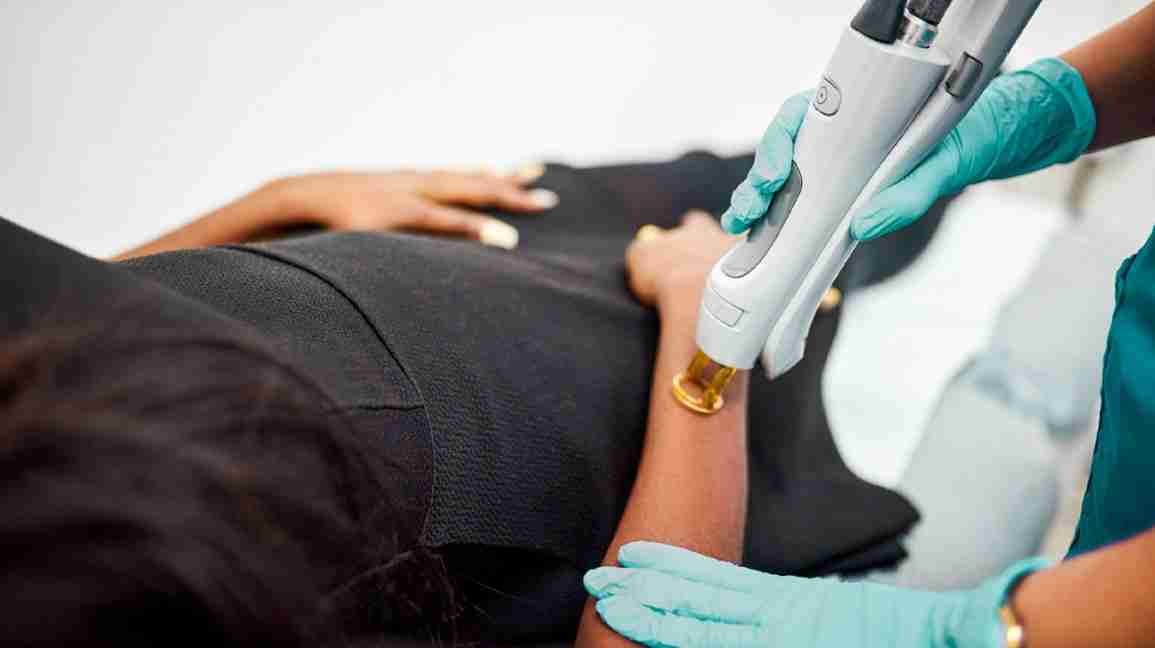Laser hair removal is a noninvasive, cosmetic procedure done to remove unwanted hair from the face and body.
For some people, laser hair removal on the body provides permanent or near-permanent results. Others may see a big reduction in the amount and thickness of hair that regrows over time.
While permanent results aren’t usually achieved on the face, regrowth may not occur for years.
Results vary and depend on several factors. These include the areas being treated and fluctuating hormonal levels.
In order to determine how long it’ll take before your hair grows back, it may help to understand the growth pattern of hair.
Stages of hair growth
Hair goes through four stages of growth. They are:
- anagen, the growing phase
- catagen, the transitional phase
- telogen, the resting phase
- exogen, the shedding phase
At any given time, you have hairs going through all four phases.
Laser hair removal works by vaporizing existing hairs below the skin and at the root.
For that reason, it can only target hairs during the anagen, or growing phase. That’s why it takes multiple treatments, spaced apart, to get to all of the hair that grows in a particular spot.
Regrowth on the body
You’ll continue to see hair during the course of laser treatments. Some of this will be regrowth, but much of it will be hair that hasn’t yet been treated.
Once your course of treatment is complete, you may not see regrowth for many years.
On the body, laser hair removal may provide permanent or very long-lasting results. Over time, any hair that does grow back should be very sparse and fine.
Regrowth on the face
On the face, laser hair removal isn’t typically permanent but may be long-lasting.
Some people report seeing no hair return after 10 years or more. Others experience regrowth sooner and rely on annual touchup treatments to keep unwanted hair at bay.
After laser hair removal, hair is most likely to grow back on the chin, neck, and other areas of the face.
This may be due in part to hormonal fluctuations and the reactivation of hair follicles by androgens, such as dehydroepiandrosterone (DHEA) and testosterone.
In some women, regrowth of hair on the chin, neck, upper lip, and sideburns may coincide with menopause, when estrogen levels drop.
Hair regrowth on the body is also possible. In some people, it may be more likely to occur on the arms, legs, or chest rather than on the bikini line, stomach, or underarms.
When hair does grow back on the body, it’s typically sparse and very fine.
In rare instances, laser hair removal may cause thicker, darker hair to grow or regrow in an adjacent area to the one being treated. This condition is known as paradoxical hypertrichosis. Paradoxical hypertrichosis can occur anywhere on the face or body.
Your hair or skin color may determine how effective laser treatments are for you initially, but they won’t affect how quickly your hair grows back once treatments are complete.
Currently, laser hair removal isn’t considered effective for blond, white, or gray hair.
Hair regrowth can be curbed by having laser treatment touchups as needed.
If hair growth is sparse, another option is electrolysis. Electrolysis works on hairs one at a time rather than on whole areas.
If you have a condition such as polycystic ovarian syndrome (PCOS), keeping your hormones balanced can help reduce the chance of hair regrowth. You can help balance these hormones with medications like Metformin or with dietary modifications, such as a low carbohydrate intake.
Laser treatments are often sold in packages of four sessions or more. You may need 12 treatments or more to completely eliminate hair growth.
After that, the need for touchups should be minimal. Some people may require semiannual treatments at first. Others may find that they don’t need a touchup for 5 years or longer.
Laser hair removal is a long-lasting way to eliminate unwanted hair on the face and body. Some people see permanent results. This is more likely to occur on the body than on the face.
Hormonal fluctuations can also play a role in hair regrowth for some people.

